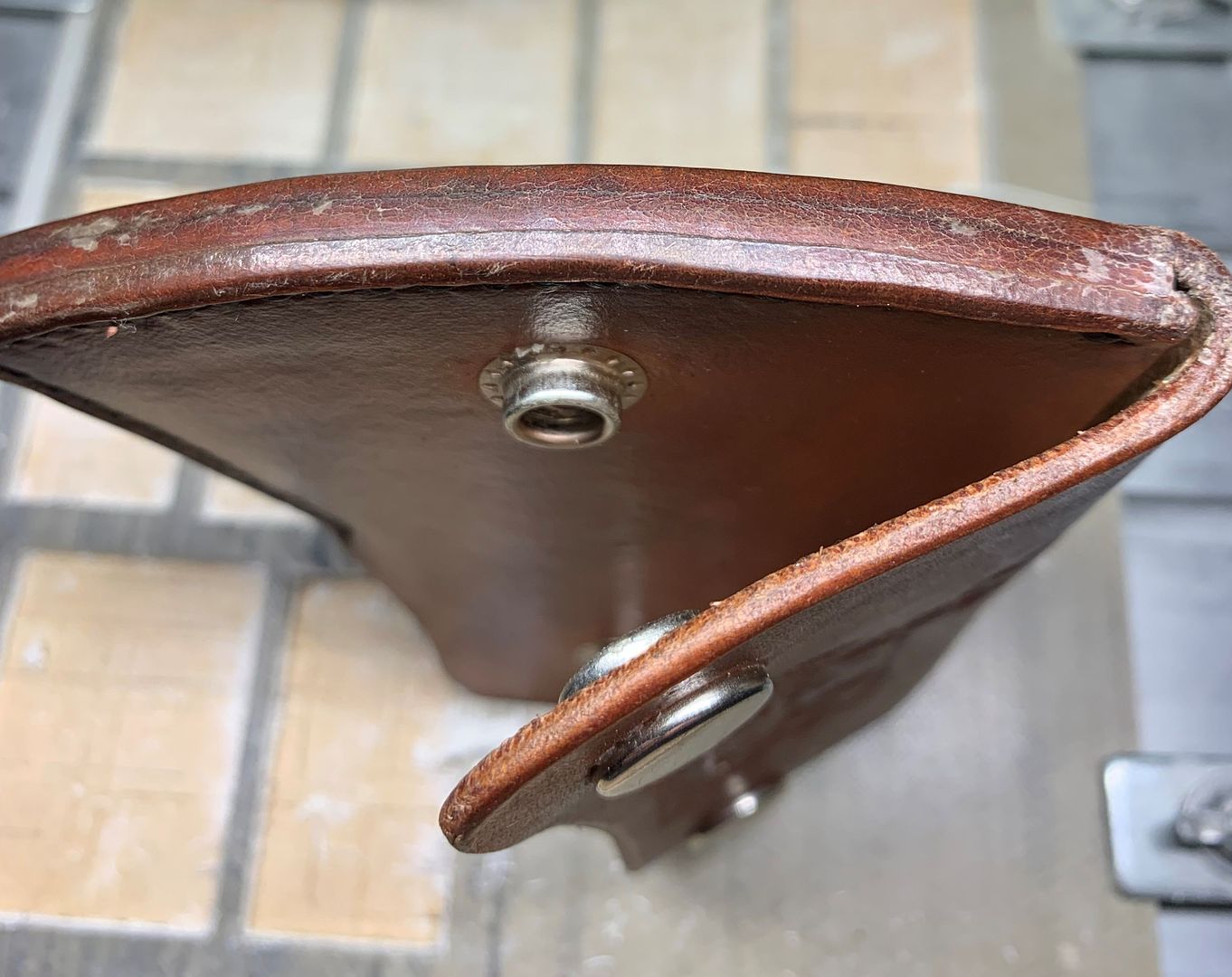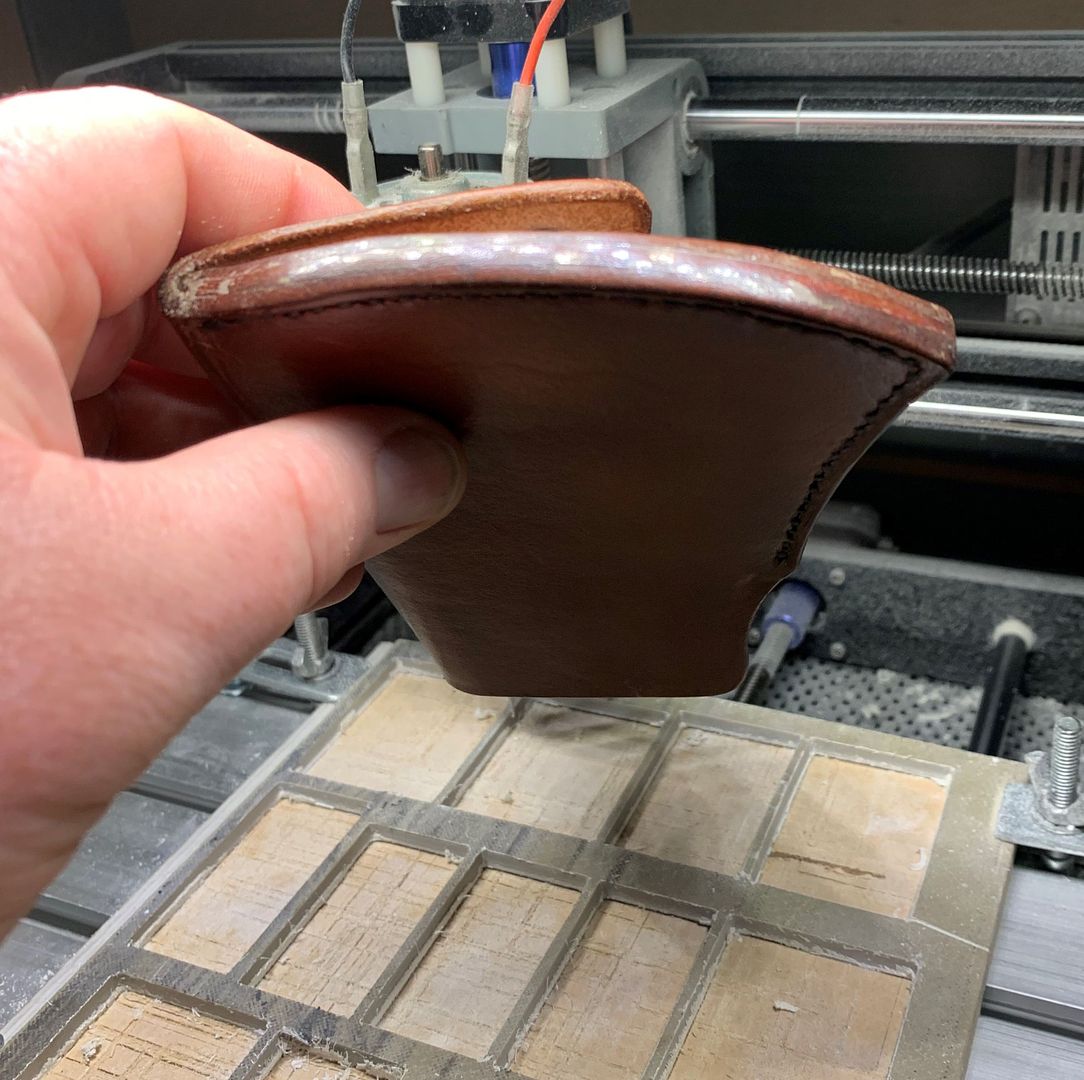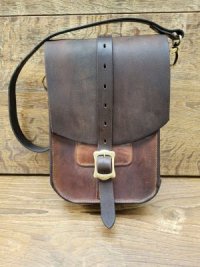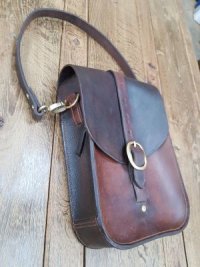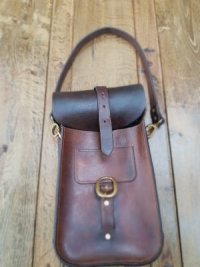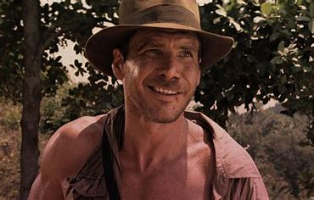Would be good to see if some of the W.I.Ps by experienced makers could high light and show not just the finished product but how certain elements of the various builds are done? steps to attach smaller parts , how burnishing is best achieved , all the little steps from flat leather to finished project?
Any takers?
I'm self taught using Youtube University combined course with trial and error.
I can offer some methods/advise/tips including burnishing edges..
Waning not photo heavy.. if any.
First is not all leather types will burnish.
Chrome Tanned wont, to test if your leather is chrome tan it will usually have a blueish/greyish edge (just use edge paint apparently.)
Another way of knowing is cut a small section say 6mm wide 50 mm long (1/4 inch by 2 inch) drop it in a breakfast bowl pour boiling water on it so its half full, if it does nothing its chrome tan.
if its veg tan it will twist or curl like its alive, quite weird to watch.
Vegetable tanned leathers, Bridal is full of waxes & oils I've had no experience with that so cant comment if it burnishes.
Normal plain raw looking veg tan that is known as russet? The stuff most of us get that can be tooled & stamped.
Pre Dyed veg tan works the same. To press an image into pre dyed leather (results vary so be sure you test on scrap) you wet the inside face in the location you want the image, allow it to soak in and press the stamp/embossing into the Dyed side your better off using a press vs a stamp you hit, I've found a longer press time gives a better the result,
apparently a heated stamp is best option but Ive never done it, so cant offer any info.
back to burnishing.. seems im rambling lol.
I personally wet the actual edge a little (I dont mean soak, just dampen) and leave it dry till it basically goes firm (pre dyed may already be very firm) at this point if the cut or edge is rough, sand smoother with a fine sand paper say 120 or 240 grit, dampen again if necessary, allow to dry I then trim the edge with a bevel tool to remove the sharp flat edge.
The nicer your edge before you try to burnish the better the finish will look.
I then rub the edge almost the face and back as though I'm sanding to dome or shanfer them with a scrap of leather, this presses the fibres tighter.
Next, (one product Ive used alot and works well.. I have a few different ones)
I apply a very tiny amount of neat pva glue (and i mean as small as you can get) on my finger tip and rub that along the edge and keep doing that till ive covered the distance.
I rub this in using my finger then either a piece of leather or a burnishing stick, could use a metal pen Ive used all sorts of things. once the pva is rubbed in, it will harden and gloss pretty good, I sometimes use bees wax over the top and continue rubbing.
Its not necessary to be applying lots of pressure but you do want a little heat generated to help the process along.
The thicker the leather the easier the process is to get a good or a gloss type edge finish, the more layers (such as a knife sheath or anything with stacked layers) the more difficult it is to get a seamless edge finish.
End of the day what ever finish you desire comes down to the amount of effort you put in. However just remember it wont last as high gloss if thats your goal, if its getting used and abused in normal day use, as can be seen with my axe sheath which isnt abused but is used. the method discribed above is how I did the edge. (see photo) this is a real close up photo (on my monitor its prob twice its physical size so x2 mag) you can see its smoothe, was/is shiny but wears with use.
looks terrible this close up in the photo, but in person it looks really good.
The idea of burnishing is to prevent dirt and water ingress into the fibres, along with looking nice. (light directly above few inches away hence reflections)
You can use Bees wax, or home made wax combos,Tokonole, Gum Trag, PVA, wall paper paste, pearl glue, water based lacquer Ive even heard varnish mentioned.
test stuff & methods on scraps and see what works for you.

